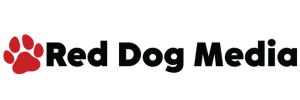When you search for Glassdoor’s most desirable places to work, you’ll recognize several of the companies that fall within the top 10%. The most well-known by far, however, is Google, ranked in 2022 as the 7th-best place to work across the U.S., Canada, U.K., France, and Germany. Not only are they highly ranked, but they consistently score a place on this list, and have been for the last 14 years (every year that the awards have been around)! That’s an impressive track record.
What makes them such a desirable company to work for? The Glassdoor ranking is purely based on employee reviews and their insights while working for the company. Highlights from their reviews on their page (posted anonymously) mention company culture, smart and collaborative coworkers, and amazing perks. But, with a closer look at the organizational structure of the company, you’ll find that Google’s success lies within its business operating system.
A lot of small start-ups struggle with growing pains. If you do a quick internet search of ‘reasons why small businesses fail,’ some of the top causes on each of those lists will be a lack of communication, poor management/leadership skills, or an unclear (or no) business plan. A business operating system (BOS) streamlines how the business is run and implements systems that can support exponential growth. This Forbes article by organization consultant Reed Deshler highlights how a BOS functions:
It gives organizations a common language. It articulates a method for effectively solving business problems. It provides tools and methods for addressing business challenges. A BOS also enables leaders to manage employees and better connect them to the operational realities and needs of the business. Perhaps most importantly, it establishes a cultural foundation so that everyone sees the organization and how it functions through the same operating lens. Taken together, the system is efficient and repeatable, and it is the catalyst for a self-sustaining way of working.

So it definitely seems like a business has a better chance of succeeding by choosing an operating system and cohesively aligning your organization’s vision, objectives, and people with that system. This has been proven true by our own company.
Almost two years ago, one of our owners was introduced to our current business model by a peer. At that time, our company saw the room for growth with a wide range of possibilities, but also recognized that the company was under-resourced. With such potential, some structure needed to be in place to properly utilize and support a large influx of new employees. After much deliberation, the leadership team decided to start the gradual implementation of the Entrepreneurial Operating System (EOS).
Now, if you do any research on successful business operating systems, you’ll find that all of them carry similar concepts. LinkedIn outlines these core elements:
The overall philosophy should be proven and align with what an individual and an organization want to achieve.
Any comprehensive system must include a shared vision. This includes defining a company vision, a systemized way of sharing the vision with the team, and methods for showing that everyone aligns around it.
It needs to offer a rhythm of accountability, which usually involves defining and measuring objectives, a schedule of specific meetings, and other methods for improving communication and accountability.
And these building blocks are the areas that have grown the most within the last couple of years. With the introduction of EOS, we’ve experienced better productivity within meetings and a vision that’s shared across the entire company. There are no assumptions being made, either by employees or management, that aren’t addressed and clarified. The company as a whole is seeing communication of expectations and being given the resources and support systems to execute their tasks.

Starting at the hiring process, each candidate now has clear expectations of the culture and vision of Red Dog Media. Having the direction of the company clearly outlined for every new employee allows us to quickly determine what’s working and what isn’t. Steve Jobs said, “If you define the problem correctly, you almost have the solution.” In practice, when everyone is held accountable, and we can define problems when they arise, less time is spent making mistakes, and the time required to find a solution can shrink. More time can be spent on tasks, instead of on tangents.
On a weekly basis, we have the opportunity to get realigned with the company values, to discuss goals (on an individual and company basis), and to address problems. With a proper meeting structure in place, fewer peoples’ time is wasted. And when more issues are solved, the workplace becomes more inviting, more innovative, and more productive.
This EOS model is a crucial part of Red Dog Media’s recent success. Even now, we are growing and implementing new systems and processes that can further streamline our growth. We have massive potential, and we’re on track to measure up.
Do you want to know more about our values? Check out our other blog posts…
Author: Victoria Salvatore
Check out our other blog posts:
- Elevating Employee Happiness and Productivity
- Elevating the Employee Experience with Chef-Curated Meals
- Employee Spotlight: Giving a Brighter Future to Las Vegas High School Students
- Answering the Question: Where is Red Dog Media Headed in the Next 3 Years?
- Employee Spotlight: Giving back to Protect Southern Nevada’s Natural Resources
